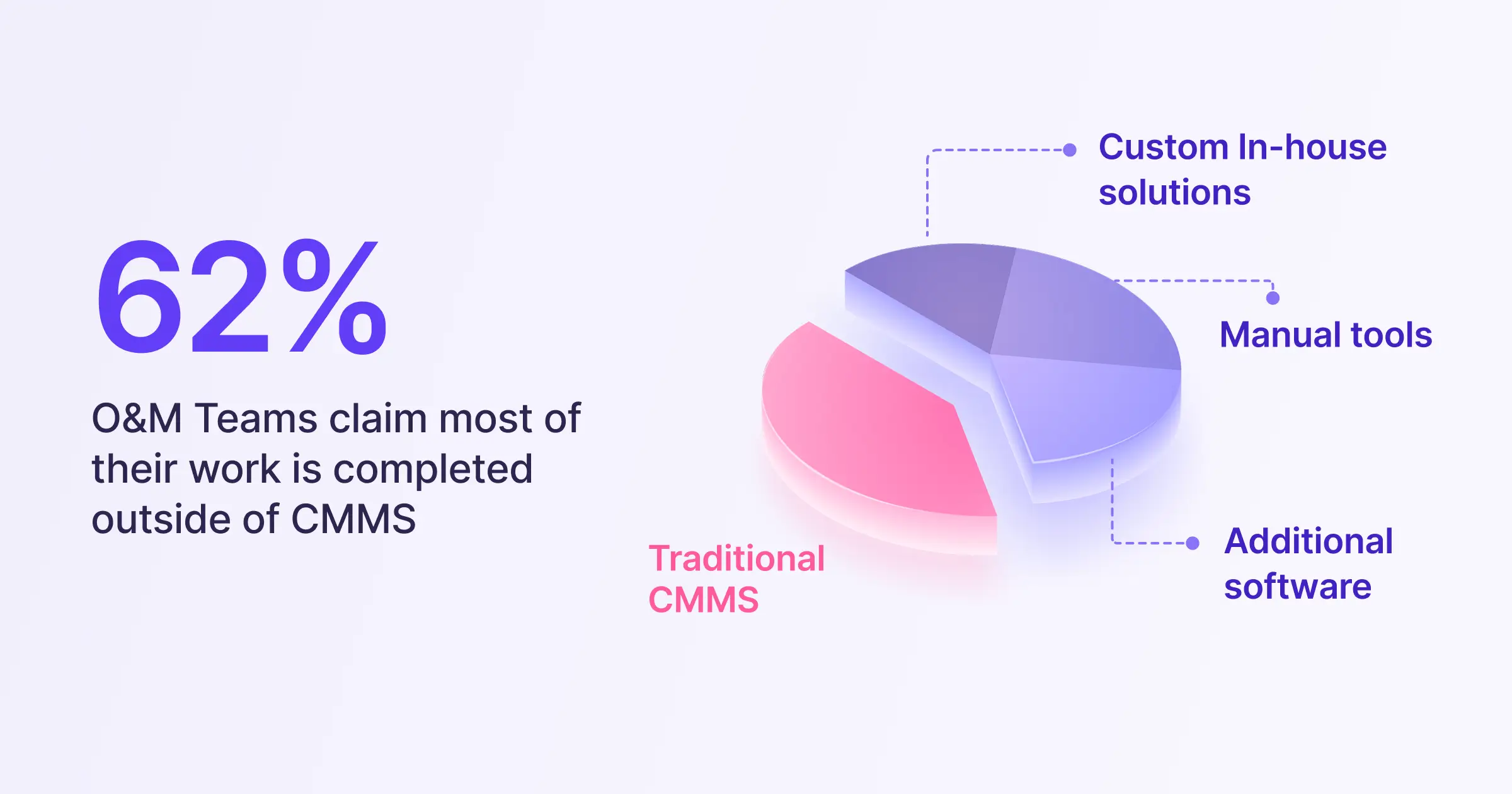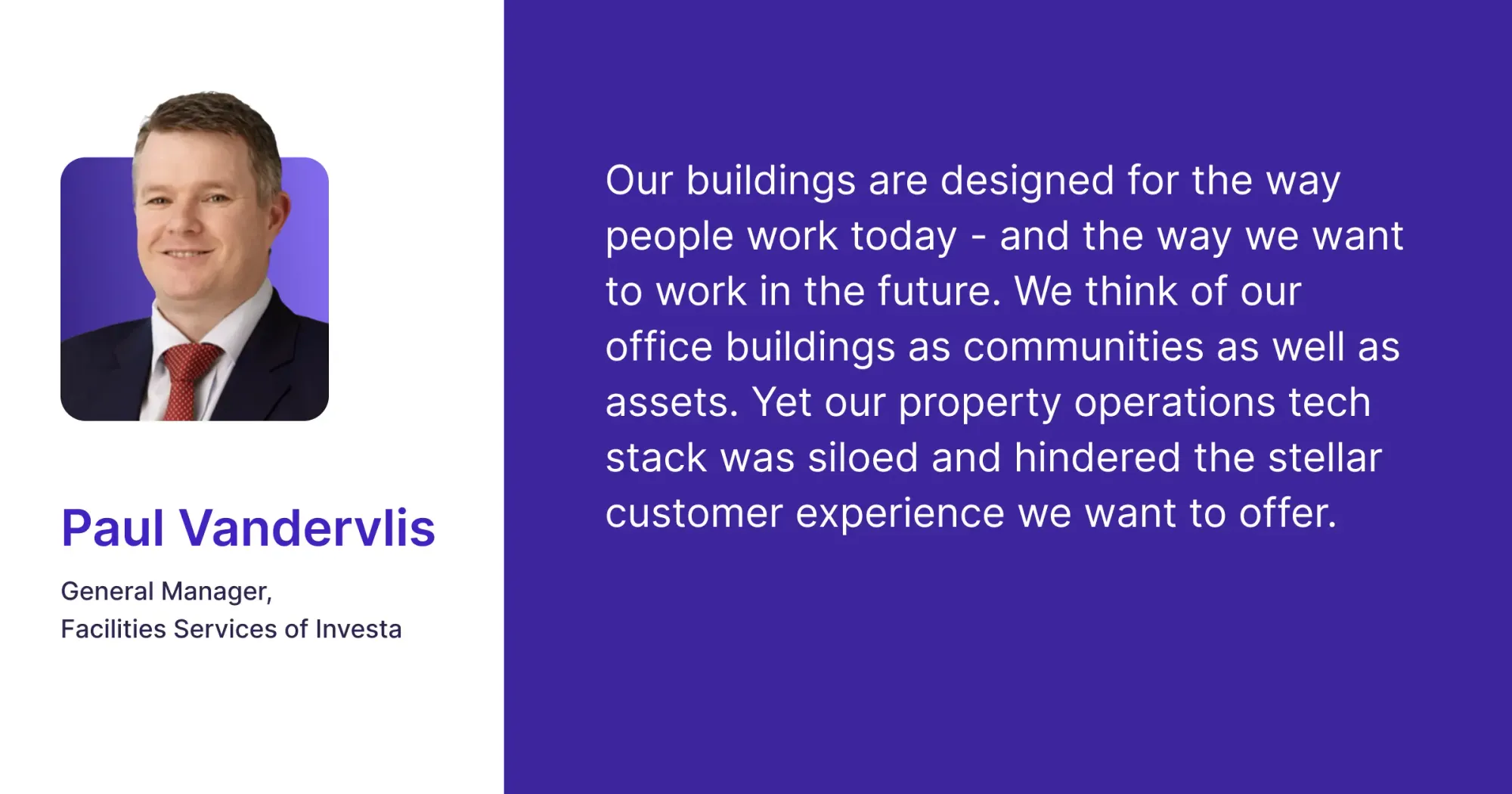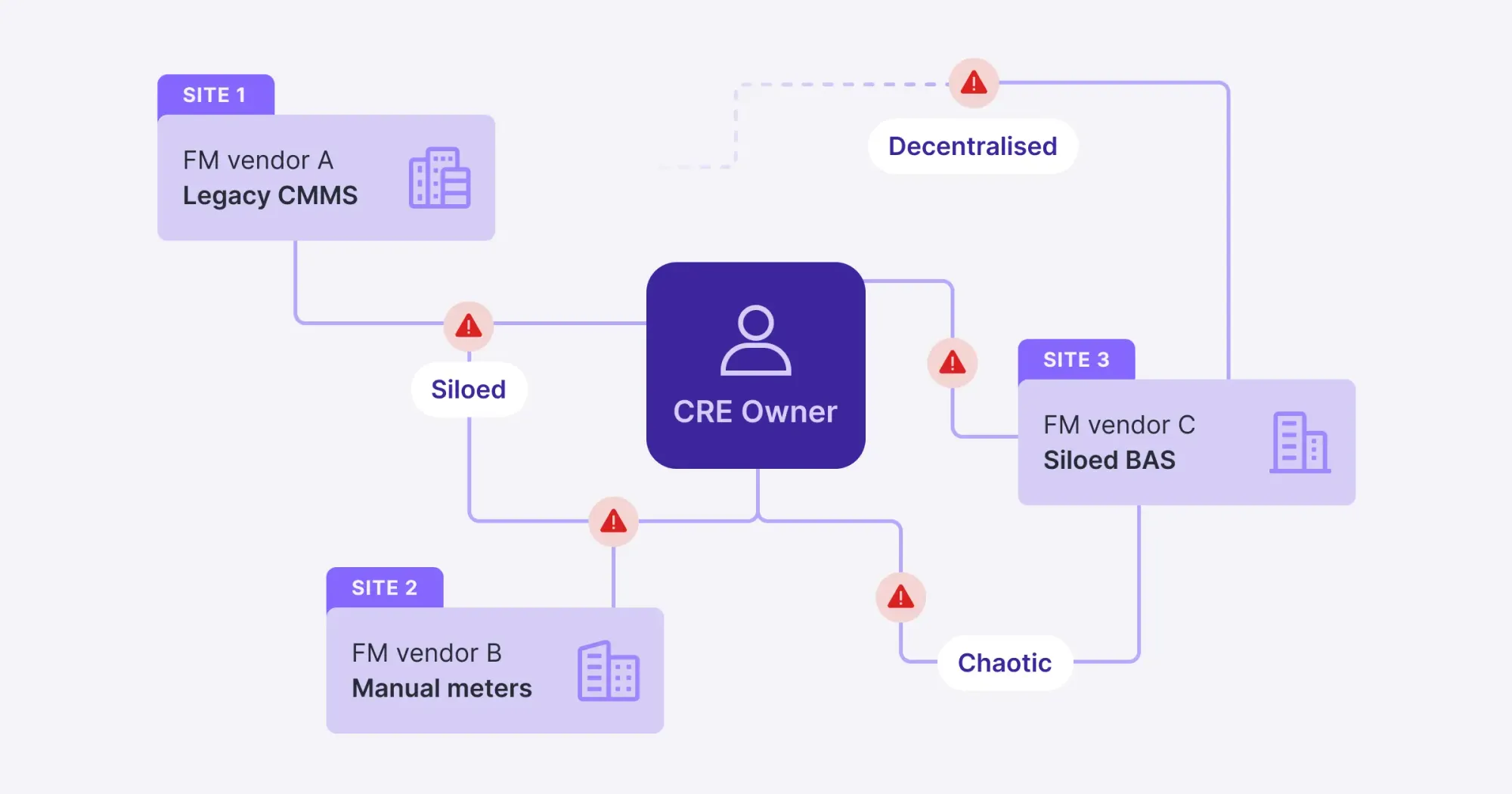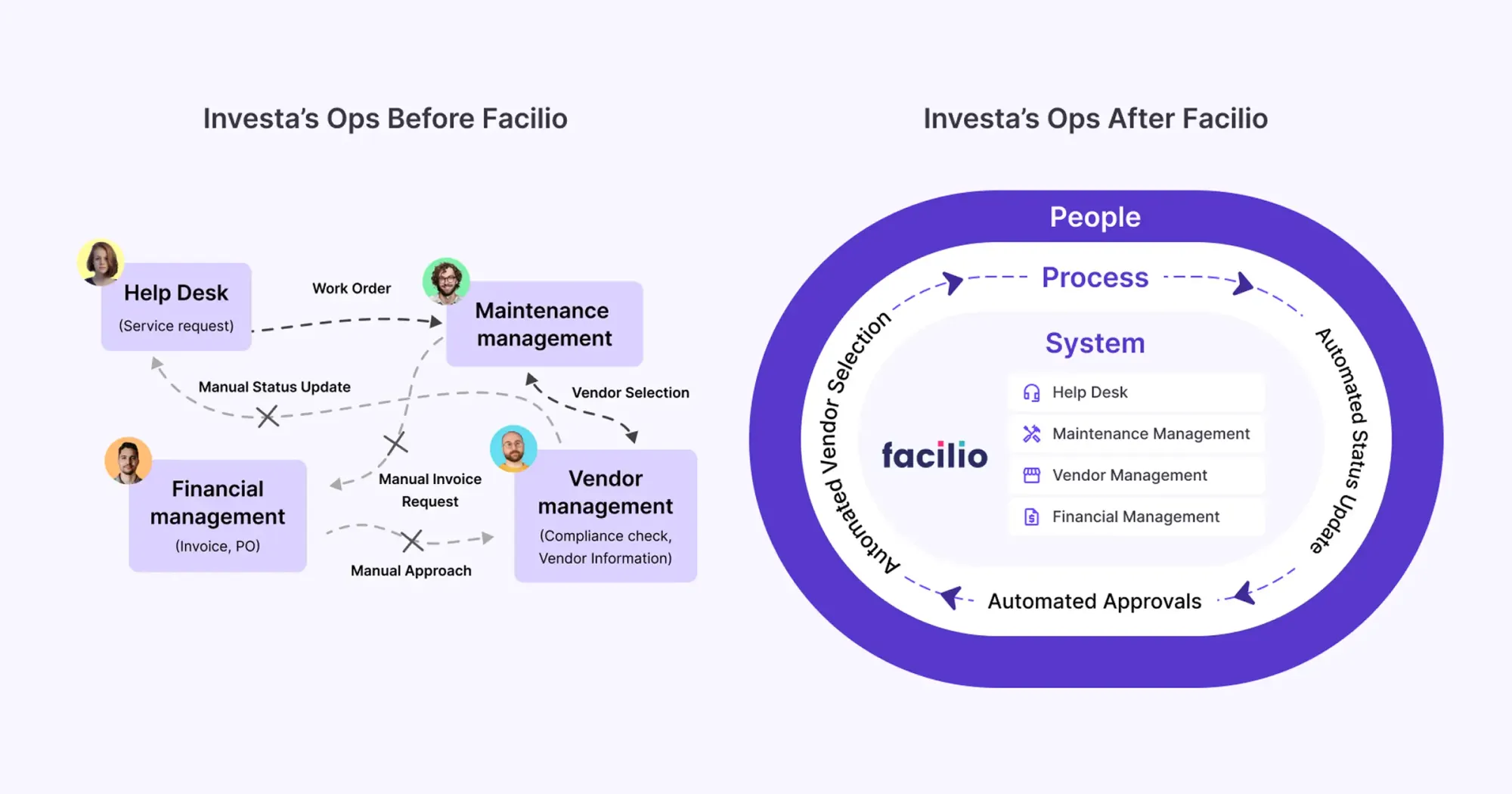Too Many Systems, Not Enough Results – The Honest Cost of Disconnected Tech
Are you still relying on outdated methods for property management? You're not alone—the property sector is notorious for clinging to old tech.
According to a recent analysis by the IFMA (International Facility Management Association), 74% of facility managers need real-time insights for better decisions, and over 70% believe technology and automation are key to streamlining maintenance and compliance.
Yet many of them are stuck juggling separate tools for work orders, compliance, asset tracking, and contractor management, which only leads to scattered information and workflow headaches.
So, if technology is meant to simplify your operations, why do you feel more overwhelmed than ever?
This article digs into why juggling too many disconnected tools slows you down and costs you money. A unified tech strategy can reduce the chaos and boost efficiency, saving you dollars.
The tech overload trap slowing down operations
Did you know? Facility management has ancient roots—from maintaining Egypt's pyramids and Mesopotamian ziggurats in early civilizations to the coordinated upkeep of castles in the Middle Ages and the structured management of grand estates during the Renaissance.
The modern era brought a pivotal shift in the 1960s with the advent of computers and the birth of Computer-Aided Facility Management (CAFM) systems. Initially designed for basic operations and maintenance, these tools soon struggled to keep pace with increasingly complex building needs.
Computerized Maintenance Management Systems (CMMS) quickly became common. Yet, legacy CMMS systems were built with a narrow, technician-focused mindset, resulting in a fragmented tech landscape. Instead of unifying operations, these systems isolated data in silos, making it difficult for owners, operators, subcontractors, and tenants to gain meaningful insights.
As facilities grew more complex, the rigidity of legacy CMMS meant users had to adapt to outdated processes rather than tailoring systems to their unique requirements. Integrating modern tech stacks like enterprise software and automation systems proved challenging and expensive.

Today, facility operations are characterized by disconnected systems:
- Fragmented work order systems: Facility managers waste time toggling between platforms, hindering task management.
- Scattered vendor and contractor data: Compliance teams struggle to verify credentials across multiple sources.
- Disjointed financial and maintenance records: Manual reconciliation delays budgeting and cost tracking.
According to our recent survey conducted during the 'Rethinking CMMS' webinar, 62% of respondents use a mix of manual methods, bespoke tools, and custom in-house solutions for tasks that their CMMS can't do. Consequently, many commercial real estate operators spend more time managing software issues than improving operations, leading to costly inefficiencies—especially when managing large portfolios.
The true price of fragmented technology
Investa, a leading Australian commercial real estate firm, struggled with fragmented systems, managing 150+ vendors across disconnected platforms, leading to delays, data discrepancies, and a lack of real-time visibility.

So, what’s the real cost of disparate systems? Here’s a breakdown of how they could be impacting your business.
Wasted time and productivity loss:
Disconnected systems create data silos, hindering organizations from accessing a unified view of their operations. This fragmentation impedes real-time visibility into key performance indicators such as financial health, customer behavior, and operational efficiency.
And, what does this look like in reality?
Consider that a facility manager overseeing a large office complex in Sydney may need to log into separate systems to check work orders, update maintenance schedules, and monitor compliance reports. This redundant process consumes valuable time and diverts attention from strategic initiatives.
Consequently, businesses may experience challenges in accurate forecasting, missed opportunities, and increased risk of costly errors.
Higher Operational Costs
Managing a diverse portfolio of facilities often requires juggling multiple software solutions across various technologies, including CAD, BIM, databases, and mobile platforms. As McKinsey found, 40% of IT balance sheets are consumed by technical debt, with companies spending 10-20% more on projects to address these inefficiencies.
30% of CIOs report that more than 20% of their budget is spent resolving tech debt, directly impacting the bottom line.
This tech diversity means dealing with the following:
- Various file types, such as paper documents, photos, and digital files, make data consistency and quality harder to maintain.
- Ensuring timely updates and security across these systems also demands significant resources.
- Coordinating workflows internally and externally to meet standards adds even more complexity.
As a result, teams spend substantial time reconciling information between systems, increasing labour costs and reducing overall efficiency. Instead of simplifying operations, these fragmented systems often escalate costs and slow down productivity.
Streamlining facility management processes is key to reducing operational costs. Interested in seeing how much you could save?

Inconsistent & inaccurate data
Traditional CMMS solutions function as basic record-keeping tools but lack predictive insights, proactive maintenance capabilities, and asset optimization, limiting their effectiveness in lifecycle management.
Imagine a portfolio manager overseeing a large commercial building with disconnected systems tracking assets, energy usage, maintenance, and financial data. The lack of CMMS integration capabilities creates data discrepancies, making it difficult to assess asset conditions, forecast costs, or make repair vs. replacement decisions.
For example, unlinked energy meters and building management systems hinder efficiency, making sustainability goals harder to achieve. Similarly, isolated maintenance logs and sensor data increase the risk of unplanned downtime and costly repairs.
Without a centralized system, drawing insights—such as correlating energy consumption with building usage—is challenging, leading to missed energy optimization opportunities and ineffective cost control.
Lack of visibility & slow decision-making
Disconnected systems create major inefficiencies in facility management, slowing response times. Owners and operators struggle to make timely, informed decisions without a centralized view.

For example, an operations director overseeing a large property portfolio may need real-time insights into maintenance trends. This delay can result in missed maintenance windows, compliance risks, and reactive spending rather than strategic planning.
Plus, these inefficiencies are even more problematic in regions like the EU and ANZ, where compliance and sustainability regulations are stringent.
Facilities managers must report on energy consumption, carbon emissions, and maintenance standards, but siloed systems make it difficult to track, verify, and act on this data efficiently. Without integrated systems providing a unified view, organizations risk falling behind on sustainability goals, failing audits, or facing unexpected operational disruptions.
Breaking down silos with connected CMMS
Facilio's State of Smart Buildings 2024 report highlights a growing commitment to smart technologies:
- 87% of business leaders plan to invest in smart building solutions.
- 35.35% struggle with integrating automation systems and sensors.
- 34.43% cite interoperability with legacy systems as their biggest challenge.
So, how can organizations overcome these hurdles and streamline smart building management? The key lies in flexible, interoperable solutions that unify disparate systems.
One system, smoother workflows
For businesses, efficient workflows are essential to smooth operations and profitability. Corporate real estate (CRE) portfolio integrated facility management (IFM) teams are under increasing pressure to optimize operations while grappling with rising labour costs and inflation.
Yet, manual processes and disconnected systems often create bottlenecks, delaying technical jobs and on-site issue resolution. The lack of real-time updates in Computer-Aided Facility Management (FM) systems is a major culprit.
Work order statuses remain outdated without automation, leading to miscommunication, scheduling conflicts, and costly inefficiencies.

An integrated platform solves these challenges by eliminating duplication, automating key tasks, and centralizing data for real-time visibility. Instead of wasting time navigating multiple systems, facility managers can access contractor credentials, service logs, and maintenance records from a single dashboard. This streamlines compliance tracking and ensures tasks are assigned based on urgency, resource availability, and skill sets, maximizing efficiency and minimizing downtime.
Cut costs, ditch redundancy
Our observation shows that many buildings attract 30% more energy costs and a 15% excess in maintenance expenses due to inadequate management alone.
Rather than paying for multiple disconnected tools, owners and operators can invest in one integrated system that covers all their needs. This reduces software expenses and cuts down on manual tasks and administrative overhead, leading to significant cost savings.
A global financial institution reduced its $450 million annual facilities management costs by over $150 million in just three years. It consolidated 10,000 vendors into a single provider and standardized processes; the company cut expenses and enhanced service quality across its thousands of locations worldwide. This demonstrates how a unified system streamlines operations, reduces complexity and drives measurable results.
Real-time data, smarter decisions
Relying on outdated maintenance strategies is costing you—both in money and efficiency. Reactive maintenance means waiting for failures, leading to expensive repairs, downtime, and unhappy occupants. A failed HVAC system or escalator isn't just an inconvenience—it's lost revenue and reputational damage.
Preventive maintenance is better but still flawed. Fixed schedules don't account for actual usage, meaning lightly used equipment gets unnecessary servicing while high-traffic assets wear out unnoticed. This one-size-fits-all approach drives up costs without optimizing performance.
The smarter approach is usage-based maintenance powered by real-time data and predictive analytics. Analyze performance trends and past maintenance data, to ensure that maintenance happens precisely when and where needed—reducing costs, extending asset life, and preventing failures.
An integrated platform with real-time dashboards brings everything together, offering portfolio-wide visibility and enabling faster, data-driven decisions that improve operations, cut expenses, and maximize asset value.
Scale up, stay in control
As multi-site enterprises expand, so do the challenges of managing operations across geographies. Without portfolio-wide visibility, tracking expenses, SLA compliance, energy efficiency, and capacity utilization becomes increasingly difficult—leading to inefficiencies and rising costs.

Future-proofing requires flexible, technology-driven environments that adapt to changing workforce needs, regulatory shifts, and operational demands. For example, a facility management team overseeing 100+ buildings can streamline compliance, work orders, and contractor scheduling through a unified platform—eliminating redundant systems, improving coordination, and maintaining consistency across locations.
As portfolios grow, so does operational complexity. Scalable solutions with a centralized system provide a single source of truth for data-driven decision-making, seamless facility management, and optimized performance.
A smarter path forward
Facility management should be about efficiency, performance, and seamless operations, not juggling multiple software systems. A unified platform replaces fragmented tools with an integrated approach, enabling real-time visibility, smarter decision-making, and streamlined workflows.

Shifting from tech fragmentation to tech consolidation isn't just about reducing costs. It's about unlocking greater efficiency, scalability, and control. The future of facility management lies in connected, data-driven solutions that empower teams to focus on what truly matters: optimizing operations, enhancing occupant experiences, and driving long-term value.
Connect your property systems and cut the costs of fragmented tools.
Connected CMMS makes saving simple.

